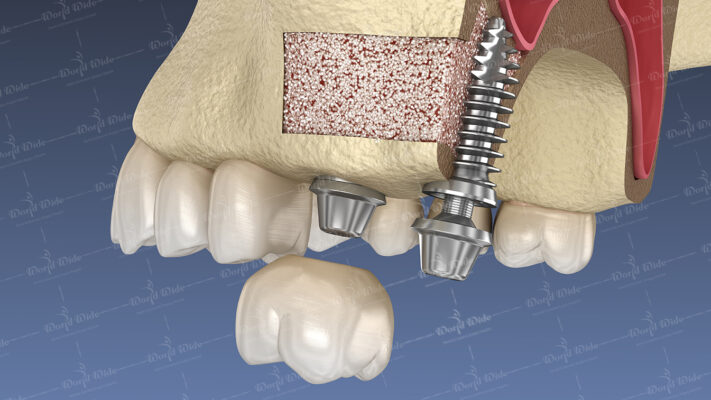1800 823 058 (AUS)
+84 922253888
Bone grafts and sinus lifts are used to accomplish the same goal, which is to provide a solid, strong platform upon which a dental implant can be placed.
This procedure is a safe and effective one that involves “building up” or adding bone to the jaw by using the patient’s natural bone from another location in the jaw and/or by using donor/synthetic bone materials.
The Procedure
Bone grafts are often performed using local anaesthesia to numb the areas that will be involved. After the procedure, you will usually be given antibiotics, pain medication (if needed), and an anti-bacterial mouthwash.
After The Procedure
After the procedure, avoid eating hard foods and put pressure on the bone graft. Your implant will be placed after the grafted bone has fused or become a strong, integrated part of the existing bone. The integration may take three or more months, depending on the location of the graft and the density of the bone.

Upper back teeth are among the most difficult to restore. When the back teeth in the upper jaw are missing the sinus cavity becomes larger as the natural bone deteriorates over time.
Sinus lift, also called sinus augmentation or sinus elevation, is a bone-augmentation procedure for patients who have insufficient natural bone in the upper back teeth area for dental implant placement.
The Procedure
An opening is made in the gum tissue, the sinus membrane is lifted, and bone powder is packed into the area, to create enough space and provide enough bone to support the implant. The procedure does not affect speech, intonation, or cause sinus problems.
After The Procedure
After the bone has been given time to develop, usually for approximately 4 to 12 months, implant can be placed.

Some people do not have enough healthy natural bone to support dental implants. One of our Vietnam dental implant experts can tell you if you need either procedure, usually based on a CT Cone Beam x-ray.
Natural bone insufficiency can be caused by:
The best way to avoid this procedure is by having an implant placed within several months of losing your original tooth. Dental implants function as an artificial tooth root, stimulating and supporting the surrounding tissue, which prevents it from deteriorating.